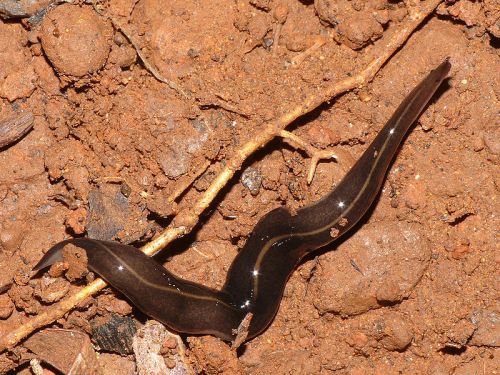by Piter Kehoma Boll
The class Gastropoda, which includes snails and slugs, is only beaten by the insects in number of species worldwide, having currently about 80 thousand described species. Among those, about 24 thousand live on land, where they are a very successful group, especially on oceanic islands.
The Hawaiian Islands alone, for example, have more than 750 snail species and there are more than 100 endemic species in the small island of Rapa in the South Pacific. This diversity is much higher than that in any continental place, but the reason for that is not completely understood.

A land snail of the genus Mandarina, endemic to the Ogasawara Islands, Japan. Photo by flickr user kmkmks (Kumiko).*
One of the most likely explanations for this huge diversity on islands is related to the lack of predators. The most common predators of snails include birds, mammals, snakes, beetles, flatworms and other snails. Most of those are not present in small and isolated islands, which allows an increase in land snail populations in such places. Without too much dangers to worry about, the community of land snails n islands can explore a greater range of niches, eventually leading to speciation.
Unfortunately, as always, the lack of danger leads to recklessness. Without predators to worry about, insular land snails tend to lay fewer eggs than their mainland relatives. If there is no danger of having most of your children eaten, why would you have that many? It is better to lay larger eggs, putting more resources on fewer babies, and so assure that they will be strong enough to fight against other snail species. Afterall, the large number of species in such a small place as an island likely leads to an increased amount of competition between species.
But why is this recklessness? Well, because you never known when a predator will arrive. And they already arrived… due to our fault.
The diversity of insular land nails was certainly affected by habitat loss promoted by humans, but also by predators that we carried with us to the islands, whether intentionally or not. These predators include rats, the predatory snail Euglandina rosea and the land flatworm Platydemus manokwari, the latter being most likely the worst of all.

The flatworm Platydemus manokwari in the Ogasawara Islands. Photo by Shinji Sugiura.
This flatworm arrived at the Chichijima Island, part of the Ogasawara Islands in the Pacific Ocean, in the early 1990s and in about two decades it led most land snail species on the island to extinction and many more are about to face the same fate on this island and on others. Not being prepared for predators, these poor snails cannot reproduce fast enough to replace all individuals eaten by the flatworm.
We have to act quickly if we want to save those that are still left.
See also: The New Guinea flatworm visits France – a menace.
– – –
![]() References and further reading:
References and further reading:
Chiba, S., & Cowie, R. (2016). Evolution and Extinction of Land Snails on Oceanic Islands. Annual Review of Ecology, Evolution, and Systematics, 47 (1), 123-141 DOI: 10.1146/annurev-ecolsys-112414-054331
Sugiura, S., Okochi, I., & Tamada, H. (2006). High Predation Pressure by an Introduced Flatworm on Land Snails on the Oceanic Ogasawara Islands. Biotropica, 38 (5), 700-703 DOI: 10.1111/j.1744-7429.2006.00196.x
– – –
*
This work is licensed under a Creative Commons Attribution-Share Alike 2.0 Generic License.
